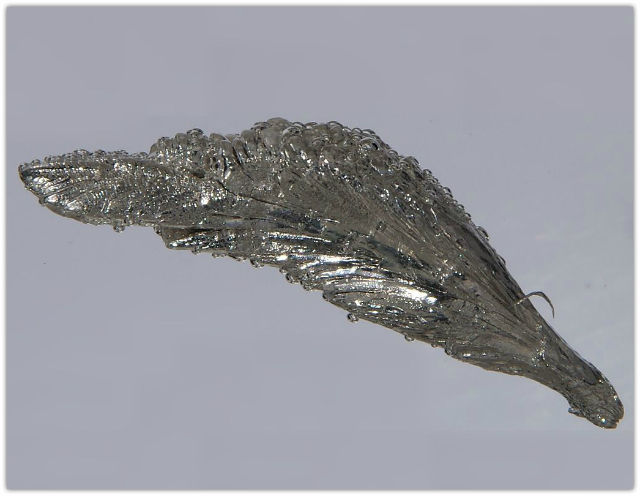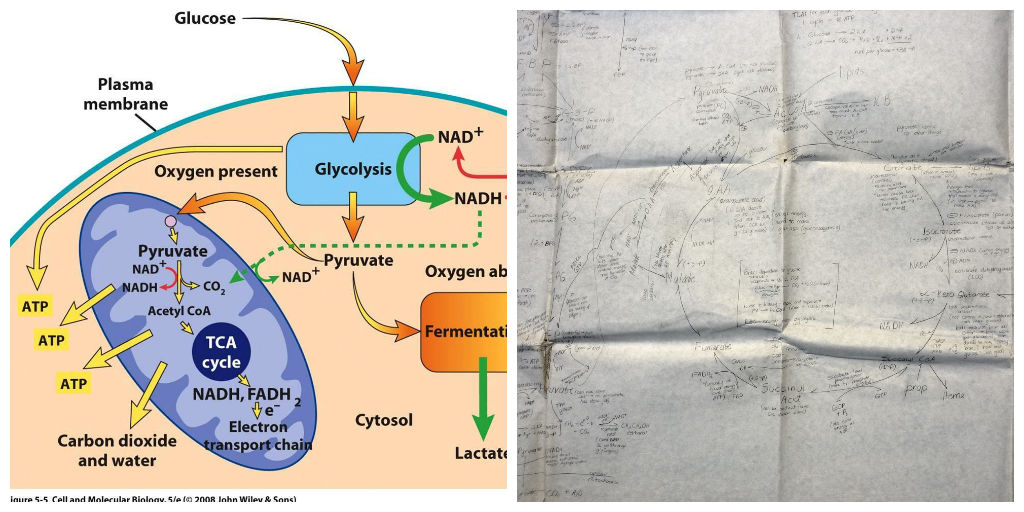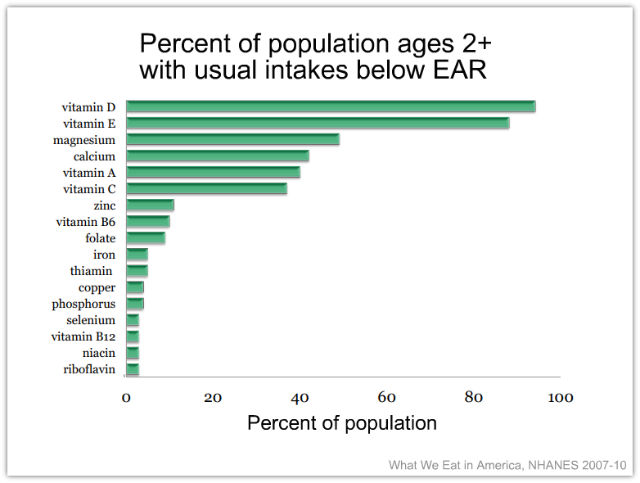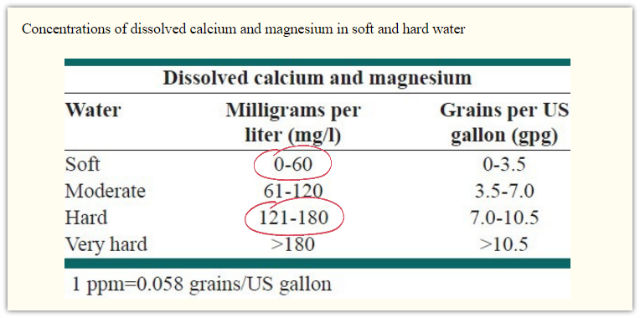Magnesium Deficiency Can Leave Runners Feeling Tired
Dear A & H…Even though today’s topic’s a bit grim, magnesium deficiency, I’m pumped it involves nutrition. It’s such a little talked about micronutrient but possibly the reason why most of us aren’t firing on all cylinders. 😲
How Magnesium Works…But, First, A Little Perspective
Imagine getting the opportunity to spend the day cruising down the coast in the raddest, baddest, most envy-worthy convertible known to man, the limited edition Stickhugger 360.
Your beyond giddy knowing you have a full tank of premium grade gas, a full day…an actual 24 hours!!!…and no commitments.
Gosh darn, you’re going to milk that puppy for all it’s worth!
With that, you hop into your dream car and crank the engine.
(Cricket chirping silence.)
You turn the key again…
Nothing.
No sound, no sputter…nothing.
Is this some sick joke?!?
Quick as a whip you jump out of the car, pop the hood, and frantically search for the problem.
Then you spot it…What the…?
Who would do such a thing?
It just doesn’t make sense.
Weird…everything seems to be taken care of…not a single bolt neglected…
Who would maintain such a fine machine and leave out the spark plugs!?!
Who, indeed.
If You’re Reading This, You’re Likely Magnesium Deficient
As runners, are we similarly sabotaging our own machines, our bodies, when we fail to meet our nutritional needs for magnesium?1,2
A valid question since it’s estimated that a good portion of the population, nearly two-thirds of the population in the western world,3 is likely deficient in this mineral. Since runners are a part of this population, its likely sub-optimal magnesium intake to meet bodily demands is affecting not only our efforts during training but also while competing.
Why’s this?
It’s because, similar to spark plugs, magnesium serves a pivotal role in the cellullar reactions that make energy. It’s a cog in the machine that, when not available in sufficient amounts, can leave us feeling tired.
An Aside
As you likely know, besides magnesium deficiency, there are a whole host of reasons why we might feel tired or lack energy. Here are a few others:4
- iron-deficiency anemia
- poor sleep hygiene/sleep apnea
- depression
- menopause
- diabetes
- heart problems
- thyroid issues
- etc.
This list underlines why it’s so difficult zeroing in on why we feel crummy.
In addition, feeling crummy might not be the result of only one issue, but many. ☹️
Anyway, back to magnesium…
What’s Magnesium?
It’s atomic number 12 on the Periodic table and the fourth most abundant mineral in our body. The latter quality, abundance, is not only impressive in its own right but foretelling since magnesium is involved in more than 300 cellular reactions in our body.5

Photo: Jurii (CC 3.0)
These include reactions that regulate (and, mind you, this is not a full list):
- blood pressure
- muscle and nerve function
- protein synthesis
- bone development
- AND…very important to runners…the metabolism of food components to produce energy.6
The Mitochondria…Where Magnesium Does Its Magic
With regard to that last role, producing energy, magnesium (Mg2+) is the figurative “spark plug” which helps convert energy stored in food into a form useful to do “work.” Unfortunately, it’s not as direct a route as this sounds but, for all its taxing complexity, it’s spectacular…

For all this to happen efficiently, though, magnesium needs to be around in sufficient amounts. It’s the *oomph* ATP needs6,7,8 to release its much-desired energy.
Note: While this role can also be fulfilled by calcium (Ca2+) and manganese (Mn2+), our body prefers magnesium.9 Kind of like many things in life. Sometimes one choice stands head and shoulders above the rest. Take sleep surfaces, for example. If given a choice between the ground, a cot, or a mattress, one will likely lead to better sleep than the others.
But what happens when magnesium is in short supply?
Could feelings of fatigue and weakness be a legitimate sign of lack of magnesium?
Prevalence of Magnesium Deficiency
As this table shows, the magnitude of insufficient magnesium intake is concerning (as well as other nutrients…☹️), especially considering how vital it is to so many of our body’s cellular reactions.

Yet, for athletes, while some scientific studies suggest we fall short of our dietary needs for magnesium1,10 , others say we are likely meeting needs.11,12
Huh?
Yep, so it goes with scientific data based on self-reported intakes, no matter if the data is based on dietary recall or food diaries, variability comes about from the simple fact that we’re sensitive about owning up to what we eat, drink, snack on, etc. How this affects intake data is underestimating the consumption of food and beverages perceived as “bad” and overestimating what’s perceived as healthy.6,13,14,15
With this in mind, if we report we’re eating better than we are, it’s not illogical to think the percentages of us failing to meet our need for magnesium is actually higher than the 50% of the population the table above suggests, maybe even as high as 80%.
In any case, with statistics pointing to how prevalent magnesium insufficiency is, it’s likely that you, a neighbor, and the person standing next to you in line at the grocery store are likely deficient in this vital nutrient without you even knowing it.
Which begs the question, what’s the cause behind this overlooked but concerning micronutrient deficiency?
What Causes Magnesium Deficiency in Otherwise Healthy Runners?
For a healthy runner who is careful about the food they put in their mouth and is otherwise healthy, the causes for a deficiency can be narrowed down to:
- poor intake and
- increased loss or need.
To see if any of the above applies to you, let’s explore each a little more closely.
Magnesium Deficiency Due to Poor Intake
Food
Magnesium-rich foods are those that can also be called whole and unrefined, the leafy greens, whole grains, nuts, seeds, and legumes that we sometimes walk by at the grocery store.
So it goes…
Life is busy and, oftentimes, we just want our foot to be easy…not having to stand in the kitchen for an hour making dinner is easily solved by buying prepared or semi-prepared meals.
No harm in that reasoning, yet, as we rely more and more on convenience, are we unconsciously chipping away at our health as more and more foods lacking key nutrients, like magnesium, start to make up the bulk of our diets?
You might say that you’re not part of this group but, ask yourself, do you regularly consume more of the following than you’d like to admit:
- coffee and/or soda6,16,17
- alcohol6,17
- fried foods/saturated fat17
- sugar18,19 (cough, cough…😬)
If you answered “yes,” there’s definitely room for improvement in your dietary habits.
If you answered “no,” you’re still not out of the woods.
For many health-conscious eaters, our best intentions at eating well could be hindered by a factor out of our control.
Today’s dirt is not yesterday’s dirt. Soil depletion is a real problem today, leading to produce with much less nutritional value than the fruits and vegetables our grandparents ate just a few decades ago. So, while modern intensive agricultural methods strive to increase reliable yields per parcel of land, this can lead to crops with lowered nutritional value20 as this statistic points out20:
A Kushi Institute analysis of nutrient data from 1975 to 1997 found that average calcium levels in 12 fresh vegetables dropped 27 percent; iron levels 37 percent; vitamin A levels 21 percent, and vitamin C levels 30 percent.
Water
Outside of food habits, water, which can be a good source of magnesium, takes a hit depending on where it’s sourced or if it’s softened.
Tap water coming from surface water is lower in magnesium content than water sourced from groundwater. Groundwater, due to the nature of its travels, percolates through minerals containing calcium and magnesium making it “hard” and, unlike surface water, mineral-rich.21
For those who choose or need to soften their water, this can drop magnesium content to as low as zero.21
As for bottled water, magnesium content varies greatly, ranging from zero to a rather good magnesium source, meeting up to 1/4 to 1/3 the Recommended Dietary Allowance (RDA) for adults per liter. For this reason, consumers of bottled water who desire minerals with their hydration need to read labels to find which brands contain minerals such as magnesium.22
Magnesium Deficiency Due to Increased Loss or Need17
Phytates and Oxalates23,24
These are naturally occurring compounds in plants that play a role in providing energy for sprouting seeds (phytates) and imparting a bitter taste to dissuade eating by predators (oxalates).
Foods with the most phytate content include whole grains, legumes, nuts, and seeds.
Foods with the most oxalate content include spinach, greens (beet, chard, collards, kale), rhubarb, cocoa, black tea, peanuts, beans, sweet potatoes, bran flakes, potatoes, etc.
These two compounds are concerning because of their ability to bind magnesium and prevent it from being absorbed. Fortunately, soaking and cooking helps reduce their content in food.25,26
It’s important to note that, in spite of their ability to bind minerals like magnesium, phytates and oxalates are not bad. They have qualities that impact our health positively, too. Concerning phytates, clinical studies suggest a protective effect against cancer through affecting our immune system,26 They also help reduce cholesterol and inhibit dental caries.25 As for oxalates, they’re associated with reducing cancer risk.27
Leaky Gut
This condition results when the wall of the small intestine is damaged by such causes as:28,29
- food allergies
- excessive use of aspirin or ibuprofen
- antibiotics
- excessive use of alcohol
- bacterial imbalance in the gut (dysbiosis).
Though not completely embraced as a condition by the medical community, leaky gut can cause malabsorption of magnesium as well as other minerals.30
Use of Proton-Pump Inhibitors
Prescription proton pump inhibitor (PPI) drugs, such as Nexium and Prevacid, can lead to magnesium deficiency when used for more than a year. Once lowered, magnesium supplements can improve levels for those who show deficiency except, for about 25% of these people, their only recourse is stopping the use of PPIs.31.32
Aging
As we get older, intestines and kidneys are less efficient at metabolizing magnesium. What this amount to are intestines less capable of absorbing this vital nutrient and increased loss in urine. Add to this a diet poor in magnesium and you’ve got the makings for a potential deficiency.31,33-34
Stress
Stress in all forms, whether physical (i.e. exertion, heat, cold, accidental trauma, surgical trauma, burns) or emotional (i.e. pain, anxiety, excitement, depression), increases our need for Mg.17,37
Sweat and Urine
Strenuous exercise seems to increase our need for so many things. Not only do we need more calories and sleep, we might need up to 10-20% more magnesium because of increased loss through urine and sweat.2,6,17
High Intake of Protein, Calcium, Vitamin D, and/or Alcohol
Excessive intake of protein, calcium, vitamin D, and/or alcohol all conspire to keep us from retaining magnesium or increasing our requirement for it, especially for those of us with a magnesium-poor diet..35,36
Excessive Menstruation17
As iron is lost in menstrual blood, so is the fate of other minerals such as magnesium.
Summing Up
Magnesium deficiency, whether created from choices under our control or not, is a condition of much concern for any athlete, especially runners, who depend on their dietary choices to be a reliable energy source.
Yet, if magnesium is not available in adequate amounts at the cellular level, no matter our good intentions with eating well and trying to live as healthy a life as we can, all these noble efforts will only do so much to alleviate our collective lack of energy.
Thankfully, magnesium deficiency, whether mild or more pronounced, is a correctable condition.
While this is reassuring, I’d caution against the knee-jerk solution to just opt for a bottle of magnesium pills. While this has its merits, which I’ll explore in my next post, the most beneficial option is one that will not only serve you now but for years and years to come.
Quite possibly, you already know what this is.
I can already hear the groaning. 🙂
Much love, O.M.
References
¹McDonald, R., & Keen, C. L. (1988). “Iron, Zinc and Magnesium Nutrition and Athletic Performance [Abstract].” Sports Medicine (Auckland, N.Z.), 5(3), 171-84. Retrieved from https://www.ncbi.nlm.nih.gov/pubmed/3285436
²Nielsen, F. H., & Lukaski, H. C. (2006). “Update on the Relationship between Magnesium and Exercise [Abstract].” Magnesium Research, 19(3), 180-9. Retrieved from https://www.ncbi.nlm.nih.gov/pubmed/17172008
³Schwalfenberg, G. K., & Genuis, S. J. (2017). “The Importance of Magnesium in Clinical Healthcare.” Scientifica, 2017, 14 pages. Retrieved from https://www.hindawi.com/journals/scientifica/2017/4179326/
⁴Ellis, R. R. (n.d.). “Why Am I So Tired?.” Retrieved from https://www.webmd.com/women/guide/why-so-tired-10-causes-fatigue#1
⁵Gröber, U, Schmidt, J., & Kisters, K. (2015). “Magnesium in Prevention and Therapy [Abstract].” Nutrients, 7(9), 8199-226. Retrieved at http://www.mdpi.com/2072-6643/7/9/5388
⁶Huskisson, E, Maggini, S. & Ruf, M. (2007). “The Role of Vitamins and Minerals in Energy Metabolism and Well-Being.” The Journal of International Medical Research, 35, 281-284. Retrieved from http://www.nanotechnologystore.com/(14)The-role-of-vitamins-and-minerals-in-energy-metabolism-and-well-being.pdf
⁷Weber, J., Wilke-Mounts, S., Senior, A. E. (1994). “Cooperativity and stoichiometry of substrate binding to the catalytic sites of Escherichia coli F1-ATPase. Effects of magnesium, inhibitors, and mutation [Abstract].” Journal of Biological Chemistry, 269(32), 20462-20467. Retrieved from http://www.jbc.org/content/269/32/20462.abstract
⁸Champeil, P., Gingold, M. P., Guillain, F., & Inesi, G. (1983). “Effect of magnesium on the calcium-dependent transient kinetics of sarcoplasmic reticulum ATPase, studied by stopped flow fluorescence and phosphorylation [Abstract].” Journal of Biological Chemistry, 258(7), 4453-4458. Retrieved from http://www.jbc.org/content/258/7/4453.abstract
⁹Passwater, R. A. (2015, Jan 30). “The Magnesium Factor: Health and Wellness Depends Largely on this Important Nutrient, Yet it is Usually Overlooked.” Retrieved from https://wholefoodsmagazine.com/columns/vitamin-connection/magnesium-factor-health-and-wellness-depends-largely-important-nutrient-y/
¹⁰Nielsen, F. H., Lukaski H.C. (2006). “Update on the relationship between magnesium and exercise [Abstract].” Magnesium Research, 19(3), 180-9. Retrieved from https://www.ncbi.nlm.nih.gov/pubmed/17172008
¹¹Lukaski, H.C. (1995). “Micronutrients (magnesium, zinc, and copper): are mineral supplements needed for athletes? [Abstract]” International Journal of Sport Nutrition, 5 Suppl, S74-83. Retrieved from https://www.ncbi.nlm.nih.gov/pubmed/7550259
¹²Lukaski, H.C. (2000). “Magnesium, zinc, and chromium nutriture and physical activity.” The American Journal of Clinical Nutrition, 72(2), 585S–593S. Retrieved from https://academic.oup.com/ajcn/article/72/2/585S/4729660
¹³Johnson, R. K. (2012). “Dietary Intake—How Do We Measure What People Are Really Eating?” Obesity, 10(S11), 63S-68S. Retrieved from https://onlinelibrary.wiley.com/doi/abs/10.1038/oby.2002.192
¹⁴Mertz, W., Tsui, J. C., Judd, J. T., Reiser S., Hallfrisch, J., Morris, E. R.,…Lashley, E. (1991). “What are people really eating? The relation between energy intake derived from estimated diet records and intake determined to maintain body weight [Abstract].” The American Journal of Clinical Nutrition, 54(2), 291-295. Retrieved from https://academic.oup.com/ajcn/article-abstract/54/2/291/4694220?redirectedFrom=fulltext
¹⁵Schoeller, D. A. (1990). “How Accurate Is Self-Reported Dietary Energy Intake?” [Abstract].” Nutrition Reviews, 48(10), 373–379. Retrieved from https://academic.oup.com/nutritionreviews/article-abstract/48/10/373/1870658?redirectedFrom=fulltext
¹⁶Massey, L. K., & Wise, K. J. (2006). “The Effect of Dietary Caffeine on Urinary Excretion of Calcium, Magnesium, Sodium and Potassium in Healthy Young Females [Abstract].” Nutrition Research, 4(1), 43-50. Retrieved from https://www.sciencedirect.com/science/article/pii/S0271531784801323?via%3Dihub
¹⁷Johnson, S. (2002). “The Multifaceted and Widespread Pathology of Magnesium Deficiency [Abstract].” Medical Hypotheses, 56(2), 163-170. Retrieved from https://linkinghub.elsevier.com/retrieve/pii/S0306987700911332
¹⁸Lemann, J. J., Lennon, E.J., Piering, W.R., Prien Jr., E.L., & Ricanati, E.S. (1970) “Evidence that glucose ingestion inhibits net renal tubular reabsorption of calcium and magnesium in man [Abstract].” The Journal of Laboratory and Clinical Medicine, 75(4), 578–585. Retrieved from https://www.translationalres.com/article/0022-2143%2870%2990156-3/abstract?code=trsl-site
¹⁹Lennon, E. J., & Piering W.F. (1970). “A Comparison of the Effects of Glucose Ingestion and NH4Cl Acidosis on Urinary Calcium and Magnesium Excretion in Man [Abstract].” The Journal of Clinical Investigation, 49(7): 1458–1465. doi: 10.1172/JCI106363. Retrieved from https://www.ncbi.nlm.nih.gov/pmc/articles/PMC322619/
²⁰Scientific American (n.d.). “Dirt Poor: Have Fruits and Vegetables Become Less Nutritious?.” Retrieved from https://www.scientificamerican.com/article/soil-depletion-and-nutrition-loss/
²¹Sengupta, P. (2013). “Potential Health Impacts of Hard Water.” International Journal of Preventive Medicine, 4(8), 866–875. Retrieved from https://www.ncbi.nlm.nih.gov/pmc/articles/PMC3775162/
²²Garzon, P., Eisenberg, M. J. (1998). “Variation in the mineral content of commercially available bottled waters: implications for health and disease [Abstract].” The American Journal of Medicine, 105(2), 125–130. Retrieved from https://www.amjmed.com/article/S0002-9343(98)00189-2/fulltext
²³Reddy, N. R., et al. Phytates in Cereals and Legumes, 1st ed., CRC Press, 1989.
²⁴Noonan, S. C., & Savage, G. P. (1999). “Oxalate content of foods and its effect on humans.” Asia Pacific Journal of Clinical Nutrition. 8(1), 64-74. Retrieved from http://apjcn.nhri.org.tw/server/apjcn/8/1/64.pdf
²⁵Shi, J., Arunasalam, K., Yeung, D., Kakuda, Y., & Mittal, G. “Phytate from edible beans: chemistry, processing and health benefits.” Food, Agriculture & Environment, 2(1), 49-58. Retrieved from https://pdfs.semanticscholar.org/3d14/c19a464c418b806de9b8edc5c804b77779e2.pdf
²⁶Kumar, V., Sinha, A. K., Makkar, H.P.S., & Becker, K. (2010). “Dietary roles of phytate and phytase in human nutrition: A review [Abstract].” Food Chemistry, 120(4), 945-959. Retrieved from https://www.sciencedirect.com/science/article/pii/S0308814609013624?via%3Dihub
²⁷Gemede, H.F., & Ratta, N. (2014). “Antinutritional factors in plant foods: Potential health benefits and adverse effects.” International Journal of Nutrition and Food Sciences, 3(4), 284-289. Retrieved from http://article.sciencepublishinggroup.com/pdf/10.11648.j.ijnfs.20140304.18.pdf
²⁸Dr. Axe Food is Medicine (n.d.). “7 Signs and Symptoms You Have Leaky Gut Syndrome.” Retrieved from https://draxe.com/7-signs-symptoms-you-have-leaky-gut/
²⁹Assadi, F. (2010). “Hypomagnesemia: an evidence-based approach to clinical cases [Abstract].” Iran Journal of Kidney Diseases, 4(1), 13-9. Retrieved at https://www.ncbi.nlm.nih.gov/pubmed/20081299
³⁰Dr. Axe Food is Medicine (n.d.). “9 Signs You Have Magnesium Deficiency and How to Treat It.” Retrieved from https://draxe.com/9-signs-magnesium-deficiency/
³¹National Institutes of Health (n.d.). “Magnesium: Fact Sheet for Health Professionals.” Retreived from https://ods.od.nih.gov/factsheets/Magnesium-HealthProfessional/
³²de Baaij, J.H., Hoendero, J.G., & Bindels, R.J. (2015). “Magnesium in man: implications for health and disease [Abstract].” Physiological Reviews, 95(1), 1-46. Retrieved at https://www.ncbi.nlm.nih.gov/pubmed/25540137
³³Food and Nutrition Board, Institute of Medicine (1997). “6 – Magnesium: BACKGROUND INFORMATION – Overview.” In Magnesium. Dietary Reference Intakes: Calcium, Phosphorus, Magnesium, Vitamin D, and Fluoride (p. 202). Retrieved from https://www.nap.edu/read/5776/chapter/8#202
³⁴Barbagallo, M., Belvedere, M., & Dominguez, L. J. (2009). “Magnesium homeostasis and aging.”Magnesium Research, 22(4), 235-46. Retrieved from http://mgwater.com/Magnesium%20%20homeostasis%20and%20aging.%20Prof%20%20Barbagallo.pdf
³⁵Seelig, M. S. (1964). “The Requirement of Magnesium by the Normal Adult: Summary and Analysis of Published Data [Abstract].” The American Journal of Clinical Nutrition, 14(6), 342–390. Retrieved from https://academic.oup.com/ajcn/article-abstract/14/6/342/4787285
³⁶Dunn, M. J., & Walser, M. (1966). “Magnesium depletion in normal man [Abstract].” Metabolism: Clinical and Experimental 15(10), 884–895. Retrieved from https://www.metabolismjournal.com/article/0026-0495(66)90159-4/pdf
³⁷Seelig, M.S. (1994). “Consequences of magnesium deficiency on the enhancement of stress reactions; preventive and therapeutic implications (a review) [Abstract].” Journal of the American College of Nutrition, 13(5), 429-446. Retrieved from https://www.tandfonline.com/doi/abs/10.1080/07315724.1994.10718432
P.S. Have you found this post helpful? If “Yes!,” please consider sharing, loving your body with a few miles today, and signing up for notice of new content. Thank you!
P.P.S. No spam ever. Staying away from processed is a healthy thing to do. 🙂






